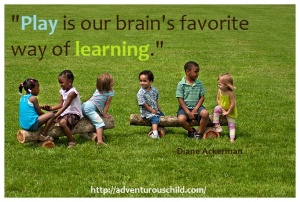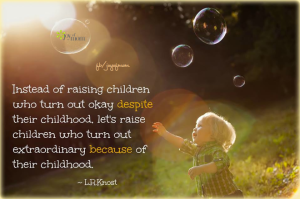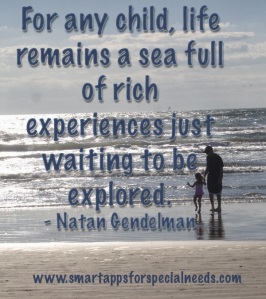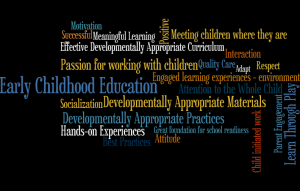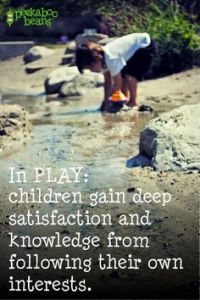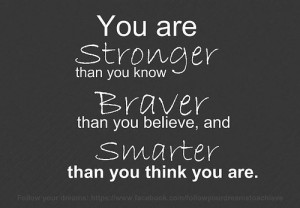
This week I researched some international organizations that work with early childhood in some capacity. One organization that I really would love to include as a community of practice is Save the Children. This organization does several things, but the one I was the most interested in was the education piece where they work to help support children’s education with both teachers and parents. They do this by training teachers, coaching parents and caregivers, offer ways for parents and community to help children through reading and math activities outside of school, introduce children to artistic expression, and ensure learning is continued even through a crisis (Save the Children, 2015).
I can say from experience that they are a wonderful program to help children to continue their learning in the event of a crisis. When tornadoes struck a small town in Mississippi, Save the Children came in and help a center we had helped earlier to get back in a routine and provided materials and furnishings to the center. The began by providing some in a day care put together in a shelter and then as the center director found another place to try and get the children back into a routine and familiar surroundings, they helped her to get the materials and furnishings needed to continue children’s learning as quickly as possible.
The following is a position that I think would be great advancement in my career as an early childhood profession as I complete my Master’s degree in early childhood.
Program Specialist, Early Childhood
|
| Location: |
US – CA – San Bernardino |
| Division.: |
U.S. Programs |
| Description |
| The Program Specialist is the on-the-ground Save the Children staff member providing training, technical assistance, and management support to program partners to ensure quality program implementation and results for children. Save the Children programming is focused on children and families for the prenatal through age ten (P-10) continuum of child development and education. Early Childhood Program Specialists focus on prenatal through age five and school-age Program Specialists focus on elementary school-age children. Under the supervision of the Deputy Program Director and working as a member of the state team and in collaboration with the national program team, the Program Specialist oversees and supports program implementation, monitoring, and evaluation at assigned partner sites. Specific duties and responsibilities are outlined below.
Essential Duties, Responsibilities and Impact
Assists in providing input to their function’s strategic and operational plan. Assists in developing short-term plans and organizes resources to achieve results. Accountable for day to day decisions around execution of job, and for setting clear objectives and measures for self. Exercises independent judgment and discretion on significant matters related to functional area. Requires little or no supervision on routine work assignments, but may require supervision to review work progress and results on non-routine work assignments. General regulations exist, but incumbent must interpret the regulations. Keeps manager informed of important issues. Builds effective relationships within their immediate or peer workgroup. Leads/supervises administrative support staff or program(s).
Program Implementation, Monitoring, and Evaluation (55%)
- Guide and support program staff to ensure quality implementation, monitoring, and evaluation of Save the Children’s program models according to established standards.
- Provide in-person and remote training and technical assistance for program staff; maximize the use of technology to do so.
- Visit each assigned site in compliance with the program model to conduct observation, coaching, and mentoring. Complete site visit reports.
- Ensure accurate and up-to-date data collection and reporting for each assigned site.
- Consult with the Senior Specialist about program questions and needs.
Partner Operations and Management (20%)
- Support the Deputy Program Director with partner management including but not limited to annual partner planning, sub-award budget and spending, grant budgets and reports, annual district/site stakeholder meetings, partnership performance management, sponsorship, and emergency/disaster communication and reporting.
- Meet regularly with each site supervisor.
- Ensure timely and accurate incident reporting and necessary follow-up.
- Support the Deputy Program Director with identification and assessment of new sites.
- Provide new sites with start-up support including but not limited to hiring and training program staff, technology and program materials, and Partner Portal usage.
Local and State Relationships/Advocacy (10%)
- Support the Deputy Program Director, and program partners as appropriate, with local, regional, and state community engagement activities, community partnerships/coalitions, and state level relationships.
- Support the Deputy Program Director with local, regional, and state program presentations.
- Support program partners with media opportunities to highlight Save the Children programs.
Professional Development (10%)
- Participate in Save the Children Program Specialist calls, meetings, and trainings.
- Stay current on relevant national standards and best practices
- Share knowledge and experience with the national program team and program specialist colleagues.
- Participate in national program team projects and US Programs work groups.
Other (5%)
- Work in collaboration with US Programs teams (e.g., Early Childhood; National Directorate; Technology, Monitoring and Evaluation; Sponsorship; Policy and Advocacy; Resource Development; Marketing, Communications, and Media).
- Provide stories from the field to national staff.
- Support, and contribute as appropriate and requested, to Save the Children priorities and initiatives.
- Support Deputy Program Director with VIP visits and other duties as assigned.
Required Background and Experience, Skills and Behaviors
Bachelor’s degree in early childhood education, child development or related field with at least three years relevant experience in the area of infant/toddler development. A Master’s degree is preferred. Experience as a trainer/mentor/coach. Experience with home visiting programming, working in rural communities with limited resources, and working with families who are economically challenged is preferred. Experience in working with or supporting professional/paraprofessional home visitors. A strong foundation in relationship-based work and supervision.
Knowledge of early development with emphasis on infant/toddler development and early language and literacy. Knowledge and experience using reflective practice. Strong interpersonal skills with demonstrated capacity as a team player and relationship builder. Demonstrated organizational and management skills related to program implementation. Experience developing and delivering training and technical assistance in-person and remotely. Proven experience working effectively with limited-resource communities. Strong written and oral communication skills including through the use of technology. Working knowledge of financial and sub-grant management. Ability to be flexible and adaptable to dynamic changes in the work environment.
As an on-the-ground Save the Children staff member who has the most contact with program partners, the Program Specialist position is critical to positive partner and community relations. The Program Specialist must work closely with the state Deputy Program Director to ensure accurate and consistent communication, partner adherence to the terms of the Save the Children Partnership Agreement, and appropriate decision-making. Additionally, the Program Specialist must work closely with the Senior Specialist and program staff and school/district administrators to achieve quality program implementation and results for children. |
FHI 360 is another organization I found interesting was one that works with individuals and communities to help reach their highest potential by advancing integrated, locally driven solutions for human development. The FHI 360 website discusses academy of education development – I like how they state that “Everything is connected. Health. Education. Nutrition. Environment. Economic development. Civil society. Gender. Youth. Research. Technology.” (FHI260. 2015). To me if we look at all these things do connect how we build communities that will in turn help human development, then we will find a way to help all children and families. I believe this would be a great addition to help build up the communities and give the resources to help early childhood professionals to help with human growth and development. The following is a position that I think would be great if it was a little closer to home.
Communications Manager, Education and Social and Economic Development
Job ID 15512
Job Function Communication
# of Openings Remaining 1
Job Locations US-DC-Washington
FHI 360 is a nonprofit human development organization dedicated to improving lives in lasting ways by advancing integrated, locally driven solutions. Our staff includes experts in health, education, nutrition, environment, economic development, civil society, gender, youth, research and technology — creating a unique mix of capabilities to address today’s interrelated development challenges. FHI 360 serves more than 70 countries and all U.S. states and territories. We are currently seeking qualified candidates for the position of: Communications Manager, Education and Social and Economic Development
Job Summary / Responsibilities:
To work collaboratively within a dynamic, fast-paced, deadline-oriented, multi-media communications department to act as liaison between Corporate Communications and key sectors that include global and U.S. education, technology and social and economic development. Key functions include developing strong partnerships with the organization’s program leads/team members and providing strategic and tactical communications support and counsel. The position will require working within a matrixed organizational structure where sector work is implemented in and across multiple regions, each with unique priorities and challenges. As this position will be responsible for overseeing communications for various sectors, strong account management skills will be essential to success.
Specific responsibilities include:
- Developing systems and processes to initiate proactive outreach to key sector leaders in order to create partnerships and regular exchange of information;
- Generating corporate communications material such as web content, fact sheets, brochures, reports for a range of audiences including, but not limited to, governments, funders and partners, leaders in key sector areas, and local audiences around the world; must have the ability to create content and manage approvals, production and distribution;
- Contributing to: FHI 360’s over-arching narrative; stories; and key messages within the overall corporate communication strategy in order to share the organization’s capabilities, expertise, and global leadership in human development;
- Managing inter-team processes and ensuring that tasks are completed on time and within budget;
- Mentoring and overseeing junior staff to meet departmental and organizational goals.
- Working with other Communications team members on communications initiatives that cross sectors and regions where FHI 360 has a strong presence;
- Representing Communications on FHI 360 task forces and committees; serve as brand ambassador in relevant external forums;
- Contributing, through everyday actions, to an organizational culture of diversity, commitment to social change, high performance, continuous quality improvement and innovation.
Additional responsibilities:
- Increases company awareness and understanding of organizational mission and issues by designing and implementing communications strategies through preparing written material for internal purposes. Works with functional teams and agencies to create brochures and other communication pieces. Manages communications staff to develop effective communication methods and oversees the user experience and content programming for the company intranet. Selects, develops and evaluates personnel to ensure the efficient operation of the function.
- Provides strategic and tactical internal communications support and counsel to internal teams in relation to commercial, corporate services and community initiatives.
- Develops and maintains internal communications programs that enforce company’s strategic goals.
- Oversees communication staff to ensure company achievements, policies, newsletter, intranet and other messages are accurate, consistent and updated to inform employees of organizational news.
- Interacts with department managers to counsel them on how to communicate information to employees.
- Develops internal communications messaging framework and approaches for all client groups.
- Facilitates all company meetings for leadership, executive roundtables and all hands events.
- Ensure all communications have a consistent tone and voice and always relates to the company’s objectives and priorities.
- Supports global and regional initiatives as well.
- Ensures internal communications requirements are met in the most cost- effective manner.
Qualifications:
- MA/MS with 5-7 of communications experience; BS/BA with 7-9 years of relevant experience, or the equivalent combination of education and experience;
- 6-8 years of experience in international education, social and economic development, public health, international development, or public policy;
- Contemporary experience in multi-media communications, with strong skills in writing;
- Evidence of successful project management;
- Evidence of skills in working as part of a team, meeting deadlines, and consistent and steady performance in a fast-paced and high profile environment.

Unicef was another organization that I like who work to ensure that all children have access to great education.
Innovations in education
Access to education has improved in the past decade for millions of children. But far too many of the world’s most disadvantaged children remain excluded from school, and many of the children in school do not learn the basic skills they need to lead productive lives.
Education systems around the globe must do more than increase resources to engage the children excluded because of location, gender, disability, ethnic origin, violence or natural disaster. Addressing these challenges requires more than business as usual.
This was an impressive outlook on how education is in other parts of the world and how they are taking steps to ensure all children are receiving educational opportunities.
Unicef also works in the early childhood area to help with health and physical development while also looking at the cognitive and social/emotional development. “UNICEF works with governments, civil society, communities and other stakeholders to design and implement inter-sectoral evidence-based ECD programmes and policies that help young children reach their full potential by supporting families and communities, and by increasing access to quality early childhood care and education” (Unicef, 2015).
References
http://www.fhi360.org
http://www.savethechildren.org/site/c.8rKLIXMGIpI4E/b.6115947/k.8D6E/Official_Site.htm
http://www.unicef.org

